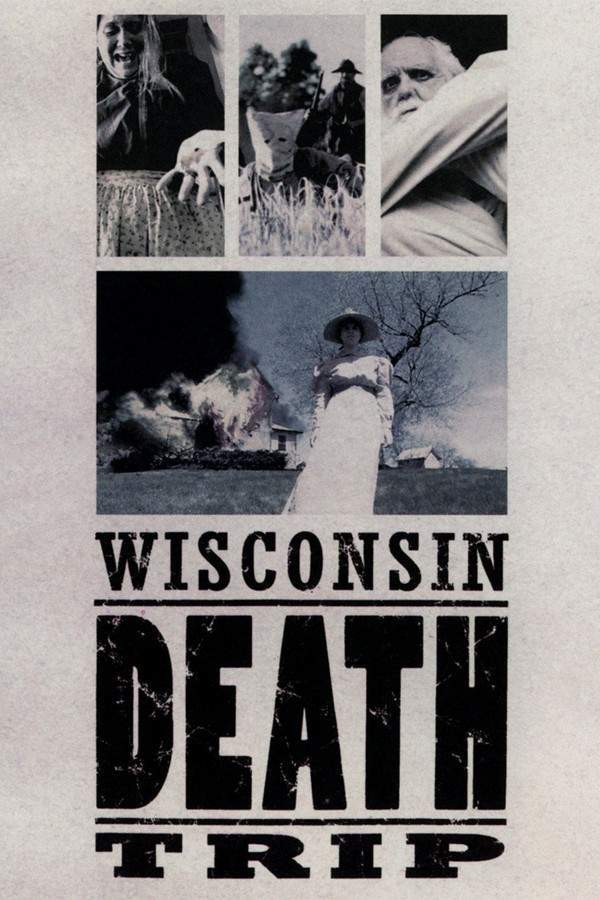
Wisconsin Death Trip
Year: 1999
Runtime: 76 mins
Language: English
Director: James Marsh
Inspired by the book of the same name, filmmaker James Marsh tells the story of tragedy, murder and mayhem that unfolded beneath the respectable façade of Black River Falls, Wisconsin, during the 19th century, revealing the town’s hidden darkness and the violent events that shattered its seemingly genteel reputation.
Warning: spoilers below!
Haven’t seen Wisconsin Death Trip yet? This summary contains major spoilers. Bookmark the page, watch the movie, and come back for the full breakdown. If you're ready, scroll on and relive the story!
Wisconsin Death Trip (1999) – Full Plot Summary & Ending Explained
Read the complete plot breakdown of Wisconsin Death Trip (1999), including all key story events, major twists, and the ending explained in detail. Discover what really happened—and what it all means.
In the late 19th century, specifically between 1890 and 1900, the northern region of Wisconsin becomes the setting for a series of unsettling and bizarre events that deeply affect the local communities, which are predominantly composed of German, Swedish, and Norwegian immigrants. These events unfold amidst a backdrop of economic collapse following the closure of several mines and the subsequent liquidation of local banks, leading to widespread hardship and societal unrest.
During this tumultuous period, numerous tragic incidents take place. Infants are abandoned by their desperate parents, with some of the children succumbing to disease, notably a diphtheria epidemic that claims many young lives. One notable case involves a local schoolteacher, Mary Sweeny, who, after falling under the influence of cocaine, goes on a violent rampage, smashing windows and damaging property, which results in her being institutionalized. The chaos extends to other tragic events—such as a young deaf and mute boy who impulsively shoots and kills his own sister with a pistol. In addition, a woman of German descent is mysteriously found frozen to death six miles outside of Black River Falls, mourning the loss of her own child, hinting at the intense emotional and psychological toll faced by the residents.
The region also witnesses a series of violent crimes, including a shocking murder in Brandon. Two young boys ambush and fatally shoot a farmer with a shotgun before taking over his home, creating a manhunt that ends with the capture and life imprisonment of the older brother, John. The area is marked by a rising wave of suicides—such as a Norwegian teenage girl who drowns herself, leaving behind a letter explaining her suffering from abuse and overwork by her parents. Several other young lovers also tragically end their lives by hanging or other methods. Young Anna, a Polish girl, emerges as a serial arsonist, responsible for multiple fires that devastate property in the region.
The psychological and emotional turmoil affects many young adults, leading to extreme acts of violence. For instance, a father violently murders his infant son before attempting to kill his wife. Another young man, rejected in love, shoots a woman who refuses his marriage proposal before turning the gun on himself. Religious fanaticism and delusions become widespread: [John Isaacson] held a violent religious gathering to confront perceived evil, believing he was combating Satan. Some individuals descend into paranoia and madness—such as a German immigrant who, convinced witches threaten him, starves his livestock to death, or [Mrs. Dutton] of La Crosse, who believes she is Jesus reincarnated. In another tragic case, [Mrs. Lawson] drowns her three children, convinced they are haunted by Satan, further illustrating the intense mental struggles faced by many residents.
In the small town of Brockway, a woman claiming to be the renowned French opera singer [Pauline L’Allemand] arrives from Chicago, accompanied by her son [Edgar]. She constructs a home and attempts to stage performances, but her deteriorating mental health—exacerbated by hearing voices and claiming to communicate with spirits—leads to her being declared legally insane and committed to Mendota Hospital. Her disheveled appearance and incoherent rants fuel local suspicion that she might be an imposter. Her case ends with her escape from the hospital, resurfacing later in Chicago and claiming to be tormented by mysterious ventriloquist acts, blending her reality with hallucinations.
Amidst this economic decline, social fabric frays further as adultery and betrayal lead to additional violence and murders. A tramp, attempting a robbery, kills several servant girls before taking his own life. Meanwhile, [Mary Sweeny] is released from her psychiatric confinement and continues her erratic wandering throughout Wisconsin, causing further destruction by vandalizing property, including at an Eau Claire train station. The character of Pauline L’Allemand also reappears later in Chicago, where she claims to have been tormented by supernatural forces during her time at Mendota.
The narrative draws a stark contrast between these grim historical events and the modern world, referencing infamous Wisconsin figures like [Ed Gein] and [Jeffrey Dahmer], whose crimes from the mid-to-late 20th century echo the dark mysteries and psychological torment seen in the 1890s. These stories—both past and present—highlight the depths of human despair, the fragility of the mind, and the shadows lurking within seemingly quiet communities.
“Throughout this tumultuous time, the line between sanity and madness often blurred, revealing a haunting landscape of human suffering, obsession, and the supernatural.”
Last Updated: August 19, 2025 at 05:15
Unlock the Full Story of Wisconsin Death Trip
Don't stop at just watching — explore Wisconsin Death Trip in full detail. From the complete plot summary and scene-by-scene timeline to character breakdowns, thematic analysis, and a deep dive into the ending — every page helps you truly understand what Wisconsin Death Trip is all about. Plus, discover what's next after the movie.
Wisconsin Death Trip Timeline
Track the full timeline of Wisconsin Death Trip with every major event arranged chronologically. Perfect for decoding non-linear storytelling, flashbacks, or parallel narratives with a clear scene-by-scene breakdown.

Characters, Settings & Themes in Wisconsin Death Trip
Discover the characters, locations, and core themes that shape Wisconsin Death Trip. Get insights into symbolic elements, setting significance, and deeper narrative meaning — ideal for thematic analysis and movie breakdowns.

Similar Movies to Wisconsin Death Trip
Discover movies like Wisconsin Death Trip that share similar genres, themes, and storytelling elements. Whether you’re drawn to the atmosphere, character arcs, or plot structure, these curated recommendations will help you explore more films you’ll love.
Explore More About Movie Wisconsin Death Trip
Wisconsin Death Trip (1999) Scene-by-Scene Movie Timeline
Wisconsin Death Trip (1999) Movie Characters, Themes & Settings
Wisconsin Death Trip (1999) Spoiler-Free Summary & Key Flow
Movies Like Wisconsin Death Trip – Similar Titles You’ll Enjoy
The Trip (2021) Detailed Story Recap
Wisconsin Death Trip (2001) Film Overview & Timeline
Blackwoods (2002) Complete Plot Breakdown
Lake Dead (2007) Complete Plot Breakdown
Lake of Death (2019) Movie Recap & Themes
The Killing of America (1981) Complete Plot Breakdown
Death Valley (1982) Full Summary & Key Details
Murder Obsession (1981) Plot Summary & Ending Explained
Death Warmed Up (1984) Ending Explained & Film Insights
Death Trip (2021) Complete Plot Breakdown
Knife in the Water (1962) Complete Plot Breakdown
A Necessary Death (2008) Plot Summary & Ending Explained
The Capture of the Green River Killer (1000) Ending Explained & Film Insights
Traces of Death (1993) Plot Summary & Ending Explained
Clear Lake, WI (2009) Story Summary & Characters

















